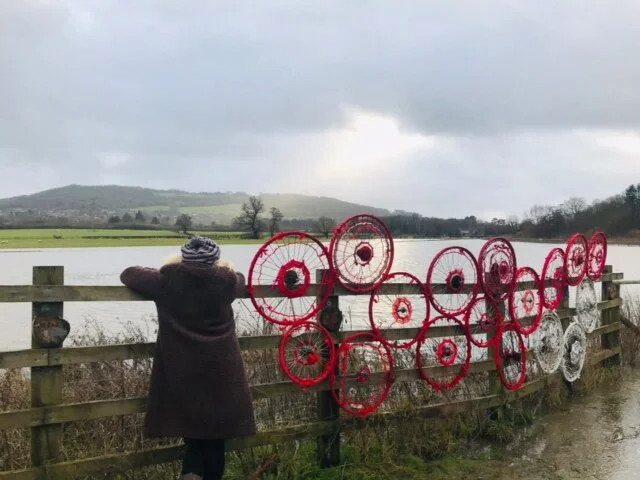Hotspots III
As I gaze across the meadows, flooded yet again this year by a barrage of water, beautiful yet at the same time unnerving, I wonder if I am looking at the realities of climate change. It is well known that climate change means a wetter world, warm air holds more moisture and yet the disruption of individual weather systems is still hard to pin down to global warming.
Having recently become a proud grannie, I find that panic grips when I allow myself to wonder what this flooding will be like in five, or ten years’ time.
As I view yet again the duplicitous nature of the car industry, just last weekend shocked by full page adverts of ‘family’ cars, petrol and diesel, in our Sunday paper, and using advertising tactics that rely on the belief that your family will not respect you or admire you if you don’t provide a large vehicle to travel around in.
This is the same car industry that colluded to falsify their emission figures, claiming that their engines were ‘cleaner’ than they really were in the real world.
Air pollution is something that has been at the forefront of my mind for some years now, having myself a ‘weak’ chest and needing a preventative inhaler.
As more and more scientific research points to the harm done from the emissions from road transport, harm that seeps deep into our bodies, and particularly affects children, as well as the wider biosphere, I feel a sense of rage and helplessness that is difficult to ignore.
Thus the idea for making the red wheels was conceived. I answered a call for an exhibition in Bath as to how to make unpalatable statistics more visible and understandable. This was something I could do, using my skills as an artist and maker by making the found bicycles wheels vibrant and visibly appealing.
Hence Hotspots became an installation of sixty nine red wheels, one wheel for every microgram of nitrogen dioxide (NO2) per cubic metre that was recorded at a busy junction in the city centre. The ‘safe’ level is under forty, but how do we know what is safe?
These were initially displayed on the railings at Hedgemead Park, a scary experience as I had never displayed work in such a public place before.
They went on to be installed in several other sites around Bath, raising awareness of how the seemingly simple things we do can harm our own and others’ health. They constantly have to be cleaned and reworked, turning grey in the polluted air. The white wheels, which also become darkened in the city air, are a reference to everyone who has been affected by road traffic accidents.
I have noticed how the small stream in the meadows becomes dark grey after rain from the run off from the bypass, particulate matter from tyre wear, brake wear, road wear, all feeding into the beautiful river Avon makes me further wonder how and why we continue to pollute our world. Thus pollution from road transport is a dangerous cocktail of chemicals, with greenhouse gas emissions from road transport making up about a fifth of UK greenhouse gas emissions (ONS 2019).
Working with the Grow Batheaston team has been inspiring and enabled me to put into practice things I have been thinking about for quite a while; it has been great to meet so many like-minded people.
Alison Harper 2021
If you would like to join me in some wheel making and decorating, to be displayed on the meadows, please get in touch.
Email art@alisonharper.net

